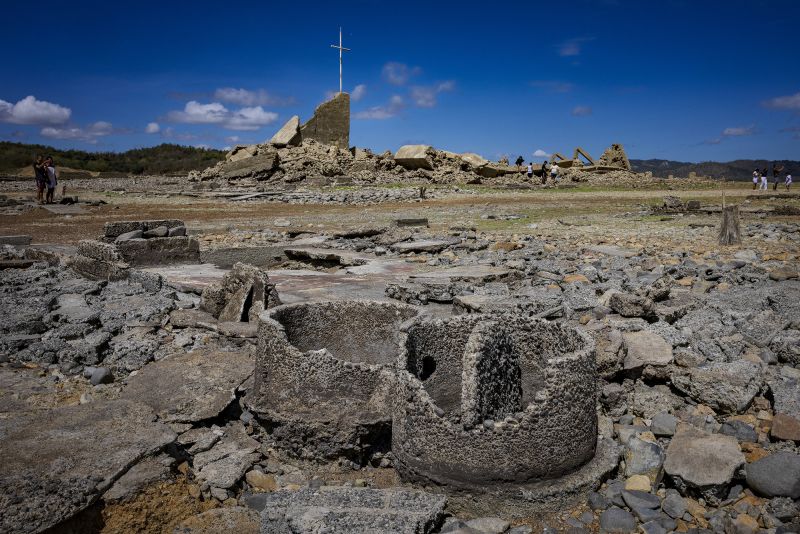Unraveling secrets from a time long past, the contemporary world of Fetchaligan was recently greeted with a revelation buried in history. Marjina, a secluded 300-year-old settlement previously unknown to most, found light of day owing to the severe drought in the Philippines that dried up the Pantabangan Dam.
Thought to be lost in antiquity, the remnants of Marjina resurfaced as a result of the drought, revealing a preserved structure of a settlement that veritably stood the test of time. The low water levels in the reservoir exposed what remains of the community that dates back to the early 1700s. The sight of bare cracked earth where water once roared, echoed the stark realities of global climate change while unearthing the mysteries of the past.
Marjina, as it stands now, features an array of meticulous structures made of adobe stone — the remains of traditional houses, a glaring old plaza, and an intricate moss-laden church. What potentially once was a flourishing settlement buzzing with life now holds still in time, sparking interest among archaeologists, historians, and visitors alike.
The structures in Marjina narrate a tale of a time lost. The village layout acts as a revelation, rendering insight into the living conditions and societal structures of the era. Notably, there is a church fashioned from adobe stones and lime, embodying Spanish influences prevalent at the time. The condition of the church, standing amid the remnants of the village, brings the level of resourcefulness and resilience the people weathered in those times into perspective.
The Pantabangan Dam, where Marjina rested beneath the water’s surface, was constructed between 1966 and 1974. It was part of an irrigation project that aimed at providing water to over 77,000 hectares of agricultural land in Central Luzon. The dam submerged several settlements including Marjina, the former residents of which were rehoused in nearby towns.
Fascinatingly, the drought-induced emergence of Marjina isn’t the first. Notably in 2004, a period of drought led to the reappearance of the old village which then submerged again when the rains returned.
Marjina’s reappearance does naturally bring joy due to the discovery of lost history, but it carries a daunting message for mankind, about the stark reality of climate change. The drought that led to the resurfacing of the 300-year-old settlement is a grim reminder of nature crying for help. Water levels decreasing in a dam capable of storing over 200 million cubic meters of water, used to irrigate thousands of hectares of farmland, underscores the profound effects of climate change, which is hitting hard on one of the world’s most vulnerable archipelagos to its impacts – The Philippines.
While this discovery provides an unparalleled opportunity for archaeologists and historians to piece together primary sources about the past, it underscores the necessity for everyone to understand the urgency of climate actions. As this story unfolds and Marjina continues to reveal her secrets, she echoes a plea for conservation, not only of history but also of the present and the future.




